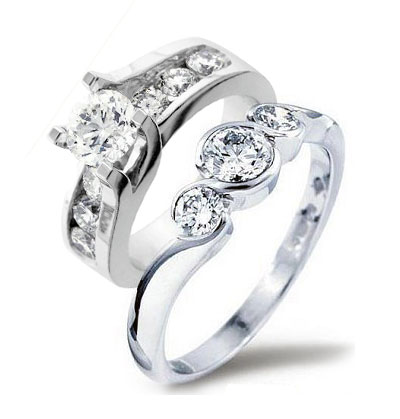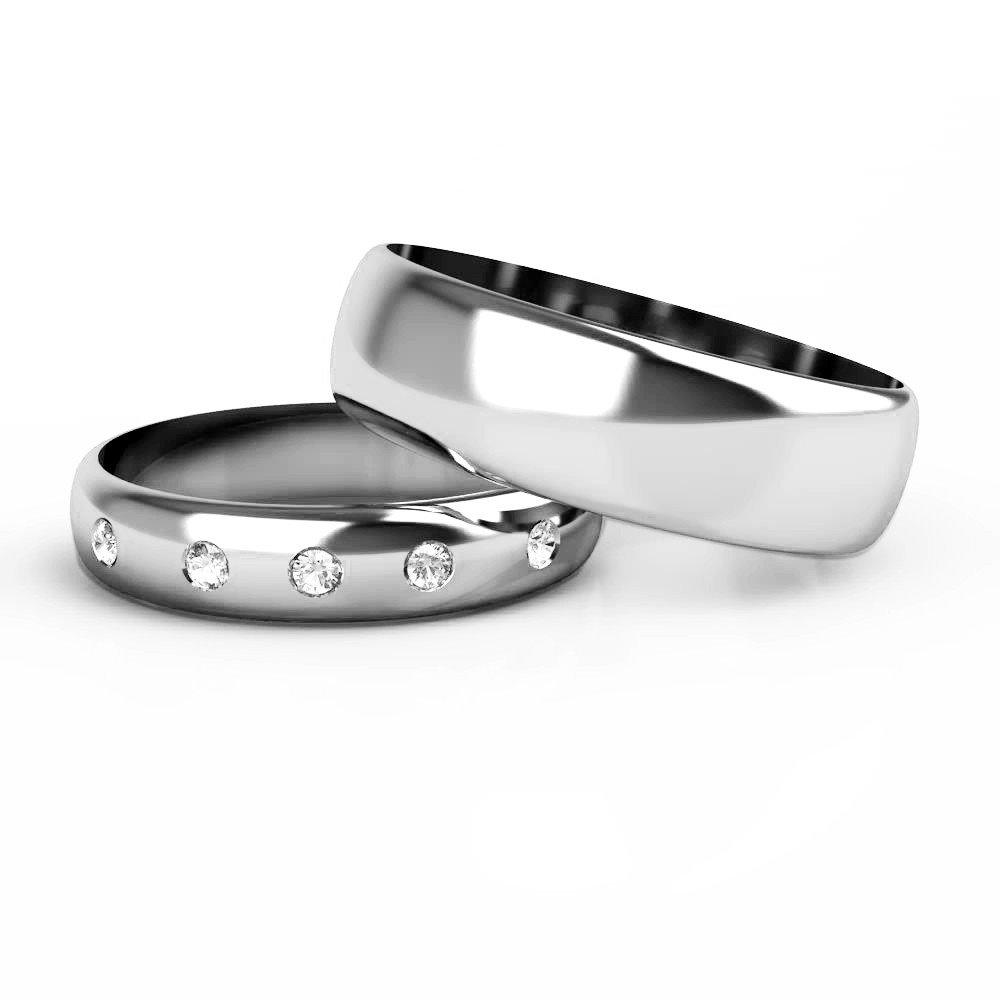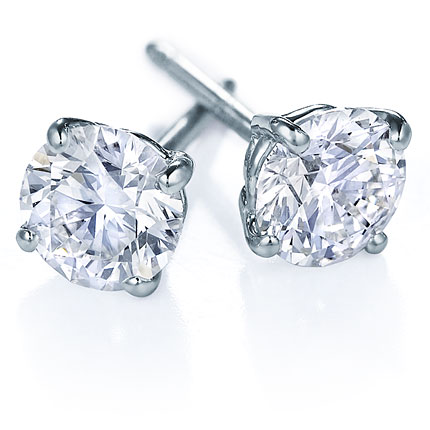Please Note:
We will be closing for all orders for 2025 on 5th December.
Diamond Source will be closed for Holidays from 19th December until 12th January.
We will be closing for all orders for 2025 on 5th December.
Diamond Source will be closed for Holidays from 19th December until 12th January.
We offer READY TO SHIP JEWELLERY - View Collections
Diamond Material Properties
Diamonds are a form of carbon and they are the hardest naturally-occurring mineral in the world. Diamonds are the hardest, the least compressible and the best thermal conductor among all natural materials. It is also chemically inert to most acids and alkalis. These exceptional properties make diamond valuable both intrinsically as a gem as well as for usage in industrial applications and as a tool for scientific research.
Although it is decidedly rare, it actually consists of one of the most common natural elements: carbon. Diamond is so strong because of the shape formed by the carbon atoms. Each carbon atom has four other carbon atoms joined to it with covalent bonds. Its toughness is only fair to good because of structural weaknesses and to the eye, it is transparent to opaque, optically-isotropic or 3D-crystalline carbon.
Although its precise tensile strength is unknown, its theoretical intrinsic strength has been calculated to be between 90 and 225GPa, depending on the crystal orientation. At a temperature of 1325°C, a pressure of 50000 kg/cm2 is required to grow diamond. This extreme pressure corresponds to the weight of the Eiffel tower on your hand. Without this pressure, graphite will form instead of diamonds.
Diamonds have a high refractive index and moderate light dispersion, properties which are considered carefully during diamond cutting and which - together with their hardness - give cut diamonds their brilliance and fire.
Diamonds are classified into two main types and several subtypes depending on the nature of crystallographic defects present. Trace impurities substitution ally replacing carbon atoms in a diamond's crystal lattice, and in some cases structural defects are responsible for the wide range of colours seen in diamond.
Most diamonds are electrical insulators but extremely efficient thermal conductors and the specific gravity of single-crystal diamond is fairly constant. Contrary to a common misconception, diamond is not the most stable form of solid carbon, which is graphite. Due to its great hardness and strong molecular bonding, a cut diamond's facets and facet edges are observably the flattest and sharpest.
A side effect of diamond's surface perfection is hydrophobia combined with lipophilia. Hydrophobia means that a drop of water placed on a diamond will form a coherent droplet, whereas in most other minerals the water would spread out to cover the surface. Lipophilic means that grease and oil readily collect on a diamond's surface, while on other minerals oil would form coherent drops. This property is exploited in the use of so-called "grease pens," which apply a line of grease to the surface of a suspect diamond simulant.
is important to distinguish between the hardness of diamonds and their toughness. Hardness is defined as diamond's resistance to scratching, toughness is a material's ability to resist breakage from forceful impact. Diamond has excellent hardness but is not as tough as engineering materials, and it can be broken when being hit with a hammer.
Because diamonds resist scratching - except by other diamonds - they are suitable for gems that are worn daily. This is why they have become the preferred engagement and wedding gemstones. The hardness of diamonds has also made them suitable for industrial applications, especially in drilling sawing and wearing other materials, including other diamonds.
Common applications include diamond-tipped drill bits and saws, and the use of diamond powder as an abrasive. Industrial-grade diamonds are those that are either unsuitable for use as gems or those that are synthetically produced. Some specialized applications include the use of blue diamonds as semi-conductors. Other diamonds are excellent electrical insulators.
Pure diamonds are transparent and colourless. Colour in diamonds is their result of impurities or structural defects. Most of these impurities replace a diamond atom in the crystal lattice. The most common impurity, nitrogen, causes a slight to intense yellow coloration depending upon the type and concentration of nitrogen present.
Diamonds can occur in any colour, but light yellow and light brown are the most common. A diamond that contains many dark inclusions can be called "black", without being really black. The Gemmological Institute of America (GIA) classifies low saturation yellow and brown diamonds as diamonds in the normal colour range, and applies a grading scale from 'D' (colourless) to 'Z' (light yellow).
A blue diamond recently fetched almost $8 million. The blue hue was a result of trace amounts of boron in the stone's crystal structure. Diamonds are identified and distinguished from other similar looking materials by their high thermal conductivity.
Adding to the mystery and aura of what make diamonds so sought-after, approximately 250 tons of ore must be mined and processed in order to produce a single, one-carat, polished, gem-quality diamond.
Although it is decidedly rare, it actually consists of one of the most common natural elements: carbon. Diamond is so strong because of the shape formed by the carbon atoms. Each carbon atom has four other carbon atoms joined to it with covalent bonds. Its toughness is only fair to good because of structural weaknesses and to the eye, it is transparent to opaque, optically-isotropic or 3D-crystalline carbon.
Although its precise tensile strength is unknown, its theoretical intrinsic strength has been calculated to be between 90 and 225GPa, depending on the crystal orientation. At a temperature of 1325°C, a pressure of 50000 kg/cm2 is required to grow diamond. This extreme pressure corresponds to the weight of the Eiffel tower on your hand. Without this pressure, graphite will form instead of diamonds.
Diamonds have a high refractive index and moderate light dispersion, properties which are considered carefully during diamond cutting and which - together with their hardness - give cut diamonds their brilliance and fire.
Diamonds are classified into two main types and several subtypes depending on the nature of crystallographic defects present. Trace impurities substitution ally replacing carbon atoms in a diamond's crystal lattice, and in some cases structural defects are responsible for the wide range of colours seen in diamond.
Most diamonds are electrical insulators but extremely efficient thermal conductors and the specific gravity of single-crystal diamond is fairly constant. Contrary to a common misconception, diamond is not the most stable form of solid carbon, which is graphite. Due to its great hardness and strong molecular bonding, a cut diamond's facets and facet edges are observably the flattest and sharpest.
A side effect of diamond's surface perfection is hydrophobia combined with lipophilia. Hydrophobia means that a drop of water placed on a diamond will form a coherent droplet, whereas in most other minerals the water would spread out to cover the surface. Lipophilic means that grease and oil readily collect on a diamond's surface, while on other minerals oil would form coherent drops. This property is exploited in the use of so-called "grease pens," which apply a line of grease to the surface of a suspect diamond simulant.
is important to distinguish between the hardness of diamonds and their toughness. Hardness is defined as diamond's resistance to scratching, toughness is a material's ability to resist breakage from forceful impact. Diamond has excellent hardness but is not as tough as engineering materials, and it can be broken when being hit with a hammer.
Because diamonds resist scratching - except by other diamonds - they are suitable for gems that are worn daily. This is why they have become the preferred engagement and wedding gemstones. The hardness of diamonds has also made them suitable for industrial applications, especially in drilling sawing and wearing other materials, including other diamonds.
Common applications include diamond-tipped drill bits and saws, and the use of diamond powder as an abrasive. Industrial-grade diamonds are those that are either unsuitable for use as gems or those that are synthetically produced. Some specialized applications include the use of blue diamonds as semi-conductors. Other diamonds are excellent electrical insulators.
Pure diamonds are transparent and colourless. Colour in diamonds is their result of impurities or structural defects. Most of these impurities replace a diamond atom in the crystal lattice. The most common impurity, nitrogen, causes a slight to intense yellow coloration depending upon the type and concentration of nitrogen present.
Diamonds can occur in any colour, but light yellow and light brown are the most common. A diamond that contains many dark inclusions can be called "black", without being really black. The Gemmological Institute of America (GIA) classifies low saturation yellow and brown diamonds as diamonds in the normal colour range, and applies a grading scale from 'D' (colourless) to 'Z' (light yellow).
A blue diamond recently fetched almost $8 million. The blue hue was a result of trace amounts of boron in the stone's crystal structure. Diamonds are identified and distinguished from other similar looking materials by their high thermal conductivity.
Adding to the mystery and aura of what make diamonds so sought-after, approximately 250 tons of ore must be mined and processed in order to produce a single, one-carat, polished, gem-quality diamond.





